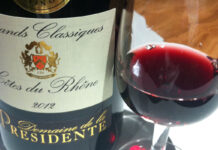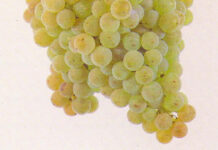Luke Richardson is a sommelier who has worked in a range of venues across the UK in a career spanning more than 20 years. He is now wine buyer/cheese fanatic at IJ Mellis Cheese. In his column for SLTN he shares his thoughts on all things wine-related and answers your questions about wine. If you have a question for Luke email it to sltn@peeblesmedia.com

Hi again all.
This month I thought I would re-visit Pinot Noir. An often misunderstood grape variety, it is tricky to grow and even trickier to produce wine from!
Susceptible to rot and sunburn (due to its thin skin), the wines are light-bodied in terms of tannins and show some natural acidity on the palate, often making it a “love or hate” type of wine.
Its natural home is in Burgundy in France, where it has been grown since the 1st century AD. However, the wines from the main part of Burgundy (the Côtes de Nuits and Côtes de Beaune- known collectively as the Côte d’Or) are almost prohibitively expensive nowadays and one must look to the lesser or more generic appellations such as Côtes des Nuits Village or simple Bourgogne Rouge to be able to find anything for the majority of us to be able to afford- c£13+.
Luckily, Pinot Noir is grown widely around the world and better value can be found elsewhere.
So, what are you looking for in a good Pinot Noir? Well, in a word, balance – between fruit and that acidity I mentioned before. Essentially, the more textured, plush fruit on the palate, the less one will notice the acidity in the finish.
That acidity is important though – often people who don’t understand these wines will say that they taste “a bit too sharp” but it is this acidity that helps Pinot Noir to be recognised as one of the best wines for food – amazing with game and fowl, fungi and some fish dishes, it is also a great way to lighten up a steak dinner or is also delicious with creamy brie style cheese.
This last combo helps us to understand why that acidity is important – the berry fruit matches well with the lactic flavours of a creamy brie or camembert cheese, the mushroom notes that are often present match well with the slightly undergrowth-like flavours on the finish of the wine, but it is the acidity that cuts through all that gooey delicious texture in a properly ripe brie-style cheese and helps to stop the cloying sensation in the mouth – essentially refreshing the palate and setting you up for the next mouthful.
So where can you find these better value examples outside of Burgundy?
Well, the Languedoc in Southern France has some OK examples, as do Chile and Argentina – expect to pay £10+ for a decent example – and some cooler areas of Australia too (such as Victoria) but maybe a couple of pounds more there for a decent one.
Romania and Bulgaria are producing some pleasant drinking examples, although you have to search for them, at around £8.50+.
The main thing is to definitely try a sample and look for that balance between the fruit and acidity, and as wine making gets better and better all around the world, not to be put off by areas that traditionally haven’t been highly regarded for their wine making.
Until next time, Happy Pinot hunting!



















